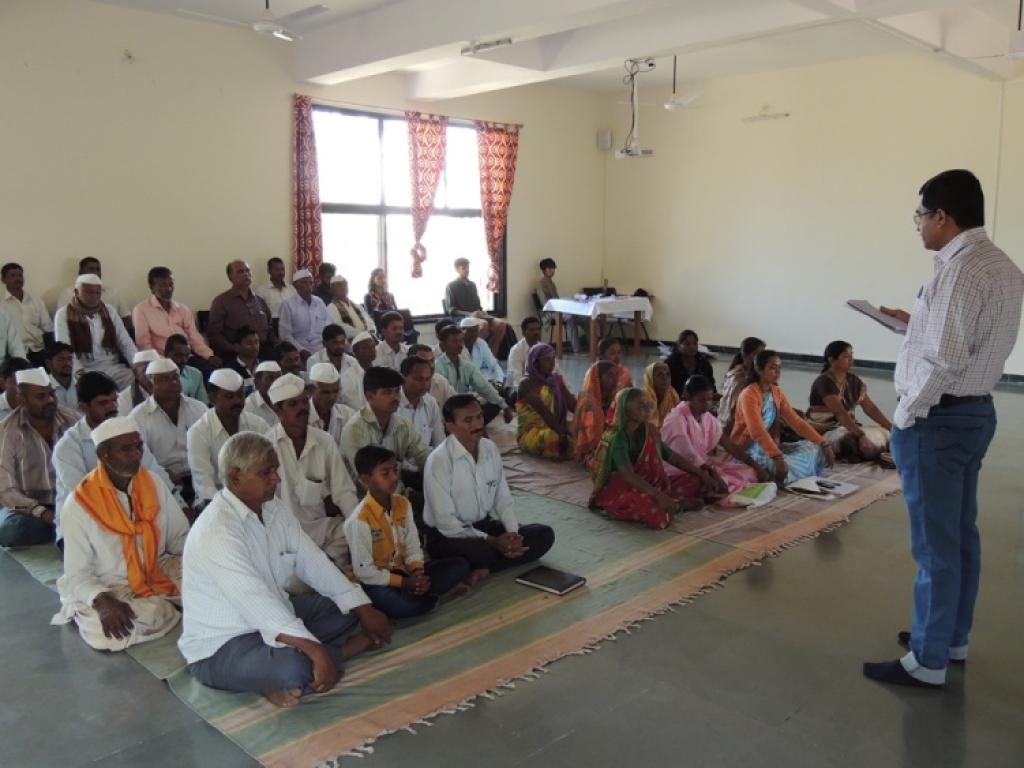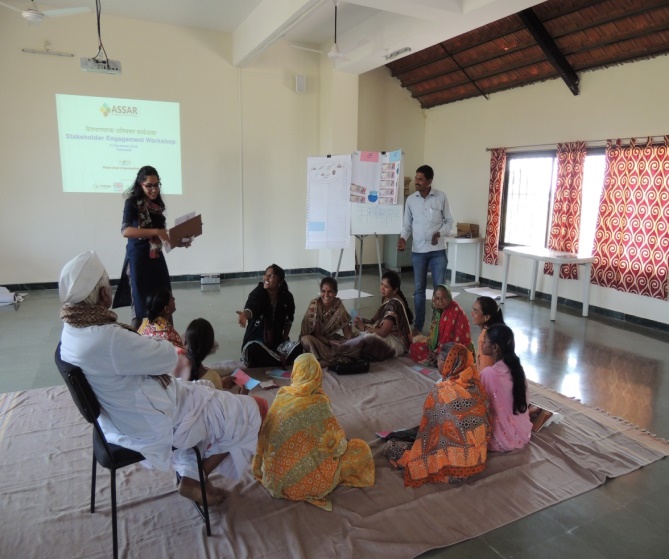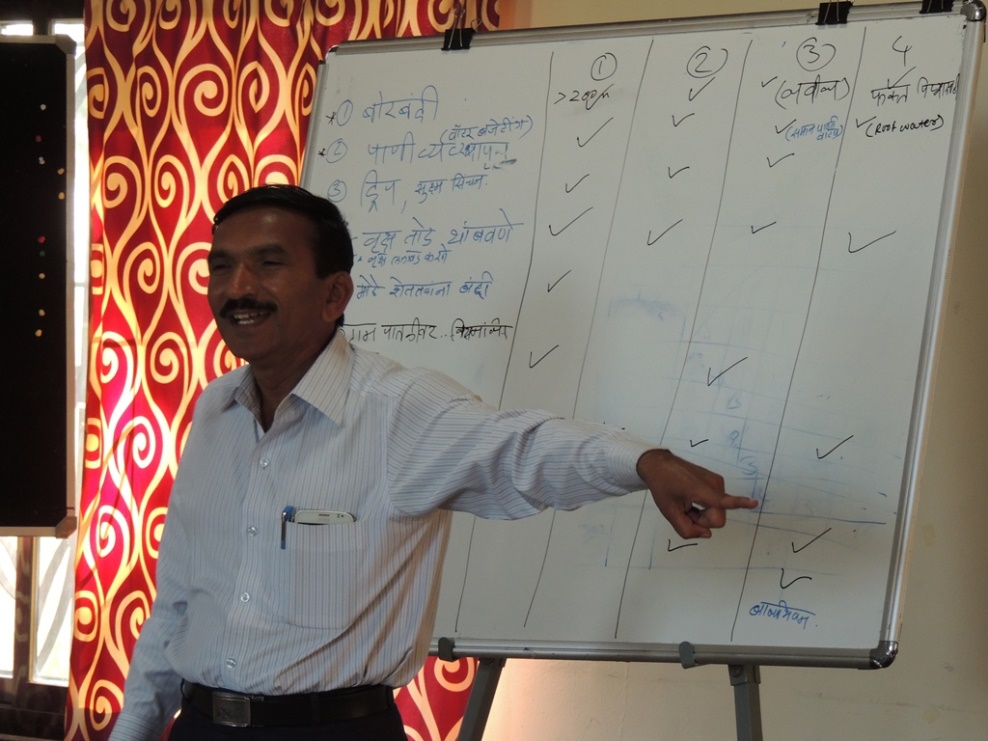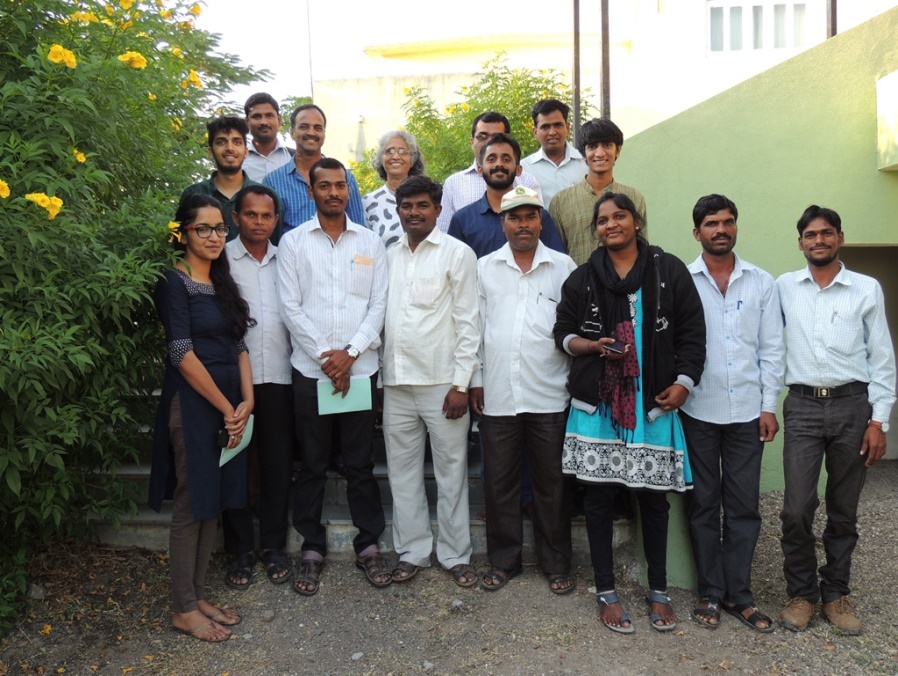Groundwater, games and governance: Resource user perspectives on what is and what ought to be

By Marcella D’Souza and Karan Misquitta, with input from Harish Daware, Rajesh Rajak, & Yash Kadam

Given the prevailing drought conditions we conducted a series of village-level interactions before the event to get a better picture of the situation on the ground. These interactions presented us with several important insights into how rural communities have responded to the ongoing drought and the constraints that they face. It also reiterated the magnitude of the water crisis that these communities are grappling with.
Groundwater has now become the primary source of water for irrigation, and drinking and domestic needs. It is surprising (given the importance of water and the growing pressure on it) that there is very little effective governance of the resource. Maharashtra has a long history of legislation on groundwater dating back to 1993; the Maharashtra Groundwater (Management and Regulation) Act of 2009 being the most recent and most comprehensive governance attempt. Thus far legislation and attempts at regulation have been mostly ineffectual. Given the centrality of groundwater to contemporary rural life, sustainable management is essential for strengthening the resilience of these communities. The new act is an important and welcome step as it empowers local communities to play a pivotal role in groundwater management. In order to ensure the implementation of a sustainable groundwater management system and to avoid exclusive use, it is necessary to build up local consent and ensure inclusion.
As anyone who has spent time working on groundwater governance in India will testify, interactions with community members can lean towards the instructive, often becoming fixated on the question of conservation while alienating community members for whom groundwater is the pivotal resource over which agrarian prosperity is determined. At the outset the team at WOTR decided that any dialogue must focus on both the economic and the resource conservation sides of the management dilemma.
For inspiration we turned to the increasingly popular field of the experimental social sciences. While early experiments were primarily conducted in laboratories, more recently researchers – particularly those studying resource management – have begun conducting field experiments with the very actors who use and depend on those resources in an attempt to better understand how decisions are made. Importantly, these games serve as tools for community engagement. A *groundwater game provided us with a well-designed activity that closely mirrored local contexts, which we used as a tool for the stakeholder engagement. The game simulates the dilemma of common pool resource management where individual farmers using a common groundwater source must choose between growing one of two crops.
|

|

|
Facilitation Material for Groundwater Game. The 1st Chart represents the Groundwater Level (blue water level Indicator); the 2nd Chart the Payoffs and Water Requirement of Each Crop (the Pink (ठ) crop yields Rs 2000 and used 1 unit of water, while the Blue (ब) crop yields Rs. 5000 and uses 3 units of water.
This takes place in repeated rounds, with the cropping pattern that emerges determining the level of groundwater abstraction. We played the game with 4 groups consisting of 5-7 players each, an observer was also assigned to each group. Two sets of rounds were played with each group; in the first set participants were not allowed to communicate with each other, while in the second set they were allowed to discuss and plan between rounds.
The activity was very well received by the participants and provoked much discussion. It played an important heuristic role during the event, as it helped people to grapple with many of the issues related to groundwater usage that are often difficult to perceive because of the longer temporal scales, information asymmetries, and concealed nature of groundwater. After the game, representatives from each group and the observers presented their experiences and reflections to the rest of the participants in a plenary. Participants remarked that they found it “unfair” that the water table had reached a critical stage because of the unsustainable practices adopted by some farmers. They observed that those who had prioritised sustainability were left worse off when the groundwater depleted as they had accumulated considerably less income compared to players who had prioritised incomes. Not only had the water table collapsed, making agriculture unsustainable, but also their savings were too low for investment in an alternative livelihood.
Participants also articulated the challenge of communication in the prisoner’s dilemma that the game (and groundwater abstraction in general) approximates. In some groups, groundwater depletion took place at the same rate or even at an accelerated rate in the rounds with communication. One player pointed out that during the communication rounds players would agree to sow Crop A (low water crop) but when it came to the decision to plant a crop each would sow Crop B (high water crop), playing what they believed was the dominant strategy, and thinking that “the rest of them are taking A, so I can take B.”

Group Preparing Village Level Rules and Regulations
In the women’s group, the general attitude was that water is equally important given the agricultural income it helps generate. Given that the burden of reproductive labour falls primarily on women, issues like the impact of declining groundwater levels on the availability of water for drinking and domestic needs also factored into their decisions.
Players deliberated on issues such as safeguarding the water resources from rampant exploitation to bringing in socially agreed norms that limit groundwater extraction. Players even suggested that legally binding laws supported by the government/legislature should be implemented. Others disagreed, stating that while the idea was, in principle, sound, they would be unwilling to follow it, as it would be detrimental to their immediate economic interests.
The momentum developed in the first session was built upon in the second session. Here each of the four groups was asked to formulate rules/laws that they felt could address the current water crisis in the region/village. The groups presented their suggestions, which varied from crop planning to increased use of micro-irrigation, borewell regulation and bans on tree felling.
While the groups zeroed in on broadly the same approaches independently, there was considerable variation in the details of the rules and regulations proposed. While all groups proposed regulating borewells, they proposed distinct variations on the same. One group proposed a blanket ban on borewells, another ban on borewells deeper than 200 feet, while a third proposed a ban on new borewells. The variations in these proposed regulations have differing implications, both for resource conservation and distribution. For example a ban on new borewells may effectively exclude farmers, particularly the poor, from accessing groundwater, while supporting the claims of farmers already accessing groundwater.

Mr. Namdeo Ghule of Sawargaon Ghule village
In order to cement the discussions that had taken place, the penultimate session of the day sought to place all that had been discussed within the domain of existing laws and frameworks, namely the 2009 Groundwater Act. For this, we invited Mr. Namdeo Ghule, a representative of the gram panchayat (lowest tier of governance) and an activist from Sawargaon Ghule (a village within the transect), to address the other participants on the aspects of the Groundwater Act. He pointed out that many of the suggestions made by the community members were already included in the act. While noting that the act had many provisions to conserve, protect and manage groundwater resources, he stressed that the fulcrum of the act is community participation, anchored by the gram panchayat at the village level. He lamented the serious deficit in people’s participation in the Gram Sabha which allows vested interests to block any serious attempts at ground water management.

The Facilitation Team!
During the closing session participants decided that in the context of an increasingly unreliable monsoon it was necessary to take some action and the best route to take this forward would be to place the learnings from these sessions for deliberation at village Gram Sabhas. The participants also acknowledged people will need to be mobilised to ensure the substantive participation in Gram Sabhas. They suggested that this mobilisation should take place at the village level and also at the levels of administration – particularly at the block (sub district) level – so that local initiatives receive support from the bureaucracy and administration.
Sustainable groundwater management is a persistent and seemingly intractable challenge, but its need to be solved is made even more urgent given the potential impacts of climate change. The stakeholder engagement event provided the team at WOTR with many important insights into the problem and how it may possibly be approached. This stakeholder engagement focused on the problem primarily from the perspective of local resource users and issues associated with community management. There is also a need to focus on the regulatory-bureaucratic regimes within which community management is nested and on the challenges faced at these scales. Future stakeholder engagement events will tackle this aspect.
* The game was developed by International Food Policy Research Institute, Arizona State University, India’s Foundation for Ecological Security and Colombia’s Universidad de los Andes.